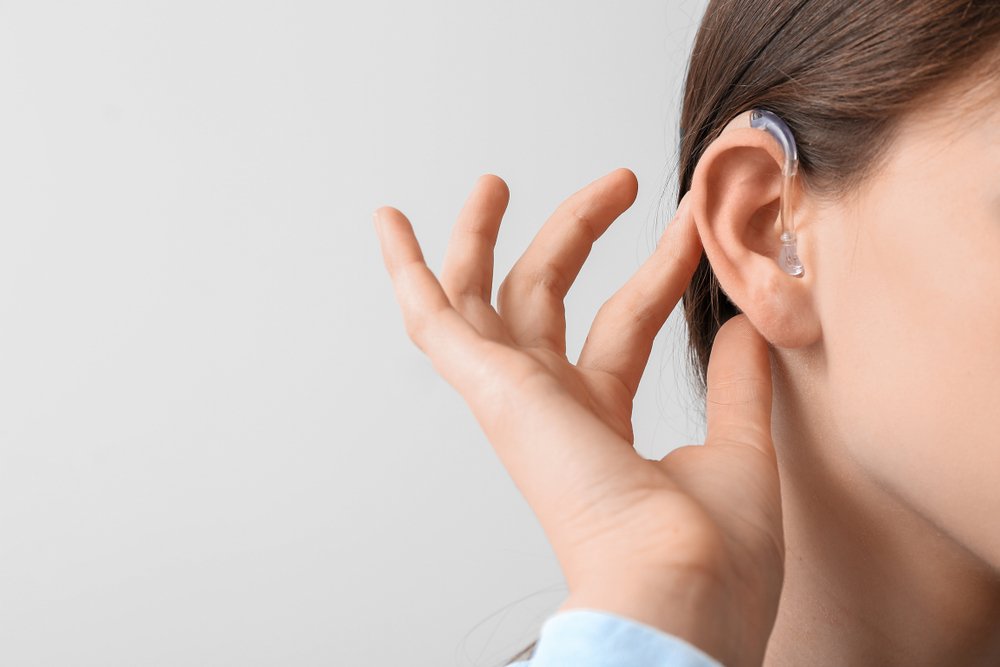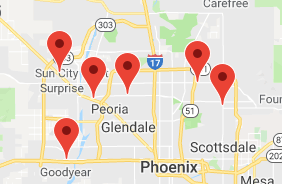Updated for 2024

What Are Hearing Aids:
Understanding Hearing Aid Technology
If you reside in the area of Phoenix, Arizona, and you’ve been having trouble with your hearing, you may ask yourself questions such as, “What is a hearing aid, and could it help me?”. Not all forms of hearing loss are always treatable, but for those that are, hearing aids are the most common treatment option recommended to patients in Scottsdale or Sun City. Nevertheless, the number of people who actually use hearing aids is only a fraction of those who could potentially benefit from them.
So, What Is a Hearing Aid?
You have probably seen people wearing hearing aids before. Some types are worn in the ear, while others are worn behind it, and you may have noticed the plastic casings. These casings contain electronic components that work by amplifying sounds so that you can perceive them more easily, even with hearing loss. An amplifier is one of the three basic components of a hearing aid. The others include a microphone, which collects the sounds and transmits them to the amplifier, and a speaker collects the signals from the amplifier and transmits them to the ear.
How Does a Hearing Aid’s Technology Work?
Once you have answered the question, “What is a hearing aid?”, your next question may be about how they work in a little bit more detail. All hearing aids are electronic devices, however not all hearing aids will work the same way.
The more traditional types of hearing aids are analog. This means that they work by converting sound waves into electrical signals. Analog hearing aids are a more affordable option for people in Glendale, Arizona. Analog/programmable hearing aids have more than one setting for different listening environments:
- Large, open spaces (e.g., a stadium or theater)
- Noisy environments (e.g., a crowded restaurant)
- Quiet places (e.g., rooms in your own house)
Another option is an analog/adjustable hearing aid. With this type, your audiologist assesses your individual hearing needs and programs an analog hearing aid that meets them. The manufacturer then builds it especially for you according to the specifications that your audiologist provides.
The other type of hearing aid is a digital hearing aid. Like an analog hearing aid, a digital hearing aid works by amplifying sound so you can hear it better. However, a digital hearing aid converts the sound waves to electrical signals to a numerical code instead of converting the sound waves to electrical signals. When it comes to programming the hearing aids for certain listening environments, digital hearing aids offer your audiologist much more flexibility. For example, digital hearing aids can be programmed to focus on a specific direction or amplify some frequencies more than others.
Components of a Hearing Aid
What is a hearing aid with a telecoil? A telecoil is a device that has been standard in most hearing aids for approximately 50 years. It helps make it easier to communicate over the phone by picking up electromagnetic signals from hearing-aid compatible equipment. Many public venues have an assistive listening system called a hearing loop. These systems produce a wireless magnetic signal that your hearing aid can pick up when activating the telecoil. This makes it easier to hear things such as stage performances, sermons, and lectures because the audio goes directly to the telecoil.
A telecoil is an old technology that is compatible with analog hearing aids. Digital hearing aids are more advanced and have more technological capabilities. Many are internet-enabled, so you can adjust them yourself with a compatible app on your smartphone. This capability also allows them to connect to Bluetooth devices to deliver the sound directly into your ear.
If you have hearing aids in both ears, they may operate independently of one another. The connectivity provided by digital hearing aids allows them to function together as a complete hearing system by communicating with each other.
What Are the Different Types of Hearing Aids?
When people ask, “What is a hearing aid?” they may be wondering about the different types and styles of hearing aids available. Hearing aids are categorized according to their size and where they are worn.
Behind the Ear (BTE)
“Behind the ear” refers to where the most important components of the hearing aid are contained within a hard plastic casing that goes behind the outer ear. This is connected to a plastic tube called an earmold that goes inside the outer ear and allows sound to travel from the hearing aid into the ear. The biggest downside of a BTE hearing aid is that it tends to be very noticeable to others, making some patients feel self-conscious.
Receiver in the Canal (RIC)
An RIC hearing aid is similar to the behind-the-ear type. With an RIC hearing aid, the earmold contains a tiny loudspeaker called a receiver that fits in your ear canal connected by an almost invisible wire. An RIC hearing aid is worn behind the ear but is smaller and more discreet than a BTE hearing aid.
In the Ear/Canal (ITE/ITC)
Neither of these types of hearing aids has any parts that sit behind the ear. All the components are contained in a casing that sits completely within the outer ear. With an ITE hearing aid, the casing is visible in the ear. An ITC hearing aid sits just within the ear canal and is less noticeable to casual observers.
Completely in the Canal (CIC) or Invisible in the Canal (IIC)
If you feel self-conscious about your hearing aids being visible to others, you should look into CIC or IIC hearing aids. These types go even deeper in the canal than an ITC hearing aid. They are nearly impossible for other people to see. Because they are so tiny, they may limit the amount of hearing improvement that you can attain from them, but they are the most discreet type of hearing aid available, representing a huge advancement in technology.
Contact Us Today to Get More Information on Hearing Aids
The type of hearing aid you receive depends on factors such as your degree of hearing loss and the cause of it. However, at Metro Hearing, our audiologist considers your preferences. Contact us for more information about hearing aids and other audiology services in the Phoenix area.
Image Source: Pixel-Shot / Shutterstock

